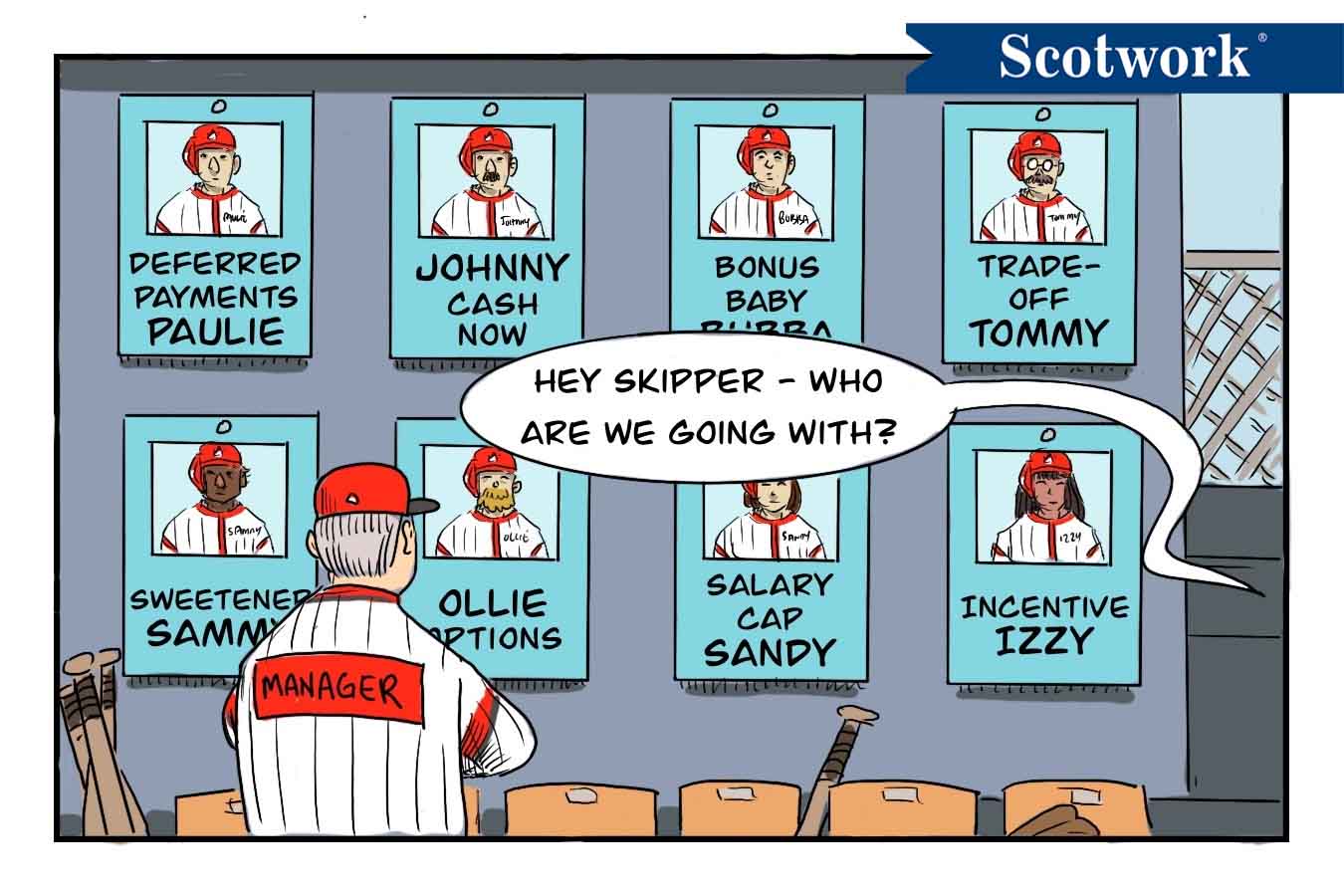The Los Angeles Dodgers and Toronto Blue Jays are facing off in the 2025 World Series. The Blue Jays sit among the top payrolls in Major League Baseball (~$255M), while the Dodgers operate at a scale all their own (~$350M). These two high-payroll teams built their rosters differently despite having constraints set by their owners and MLB. But when you’re playing in a money-rich league, mastering how you spend is what separates contenders from pretenders.
For negotiators outside of sport, this is a powerful lesson: Constraints don’t have to limit you; in fact, they can force you to deal smarter.
There’s No Salary Cap . . . but There’s a Wall
In most major sports, you hear about “salary caps.” In MLB, however, there’s no hard cap. Teams can spend freely, but there’s a catch: the Competitive Balance Tax (aka luxury tax). Once a team’s payroll crosses a threshold, escalating penalties kick in (tax percentages, draft penalties, international spending restrictions, etc.).
This means large-payroll teams face a “soft cap” but not a hard limit. They can spend more but with increasing penalties. The Dodgers have repeatedly operated above the luxury threshold — meaning each dollar beyond the limit carries additional weight.
All businesses have constraints. Exceeding those boundaries can come at a heavy cost. Smart negotiators treat the threshold not as an impassable barrier, but as a detail of the final deal.
How the Dodgers Packaged Their Payroll for Ohtani
Enter superstar Shohei Ohtani. In December 2023, the Dodgers signed him to a 10-year, $700M deal. On the surface: record-breaking with, presumably, a massive luxury tax attached. However, that’s not the case: Most of his salary was deferred (about $680M will be paid from 2034 to 2043).
Due to how MLB calculates luxury tax and payroll values, this deferred structure lowered the “tax value” of the contract to around $46M per year, rather than the headline $70M. In effect, the Dodgers secured the most marketable player in baseball, while preserving near-term payroll flexibility to build the rest of their roster. That’s smart baseball. That’s smart negotiating.
Turning Constraints into Catalysts
So, what can negotiators learn from this?
1. Don’t fight the constraint — design around it.
The Dodgers didn’t view the luxury tax as a roadblock; they treated it as a design parameter. When you face budget ceilings, regulatory limits, or time deadlines, treat them not as stop signs, but as boundaries within which creative work happens.
2. Use time to create flexibility.
In business, you may spread payments, tie them to milestones, use deferred compensation, or shift timing of deliverables. This gives you headroom today while still committing to value tomorrow.
3. Align incentives, not just numbers.
Ohtani’s willingness to defer wasn’t self-sacrifice; it was alignment. He wants to win now, and so do the Dodgers. A win for one is a win for both. In a negotiation, when you align all stakeholders’ incentives, you’ve created a deal built to last.
4. Understand the restrictions.
To repackage a proposal, you need to understand what’s possible and what isn’t. As an example, Ohtani was open to deferring 97% of his salary, but if he wasn’t open to that, the deal couldn’t have happened in the manner that it did. Discover your restrictions early on, so you can package a deal accordingly.
5. Help the other side sell the deal.
Find out how the other side will need to sell the deal internally, and look for ways to structure the deal in a manner that makes that process easier. This may include using language the other party understands or highlighting how it will achieve their objectives.
Why It Matters
For negotiators, facing constraints isn’t a disadvantage — it’s an invitation to build smarter deals.
The next time someone says, “We can’t do that because of X constraint,” think like the Dodgers. Don’t rail against the constraint. Design around it. In the game of high-stakes negotiation, the team that wins is the team that negotiates smarter.
Negotiation Training and Consulting to Help You Turn Constraints into Advantages.
Constraints don’t have to limit you; in fact, they can force you to deal smarter. Rely on Scotwork’s 50 years of expertise to help you deal with your constraints
Get in touch with one of our experts today.

